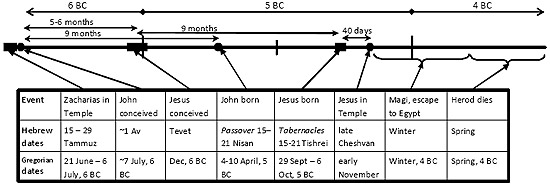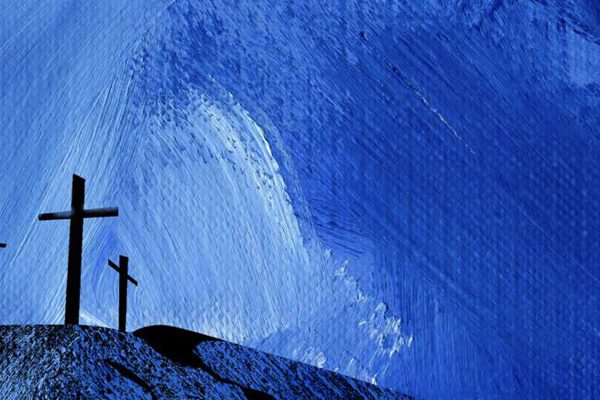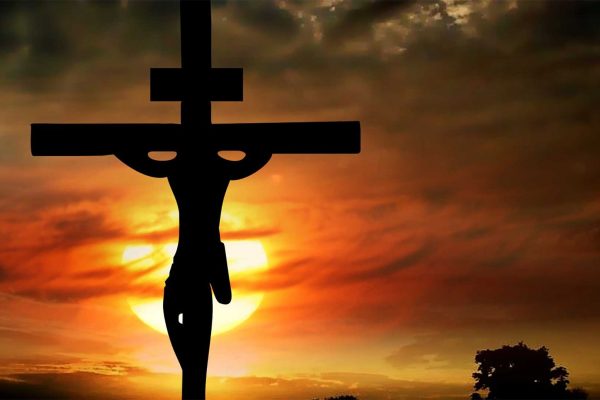When Was Jesus Born?
Was it really on December 25th?

According to Luke 1:24-26, Mary conceived Jesus in the sixth month of Elizabeth’s pregnancy with John the Baptist. This means that Jesus was born 15 months after the angel Gabriel appeared to Elizabeth’s husband, Zacharias, and informed him that his wife would bear a child.
According to Luke 1:5, Zacharias was a priest of the division of Abijah. Luke 1:8 says that Gabriel appeared to Zacharias while he was serving as a priest in the Temple.
We know from the Talmud and other sources that the division of Abijah served as priests during the second half of the fourth month of the Jewish religious calendar — which would have put it in late June (the Jewish religious calendar begins in March with Passover).
Fifteen months later would place the birth of Jesus in the seventh month of the Jewish calendar. That would be in the fall of the year, in either late September or early October. His conception, not His birth, would have occurred in December of the previous year.
The seventh month of the Jewish calendar is the month of the Feast of Tabernacles. John 1:14, speaking of Jesus as the Word, says: “And the Word became flesh and dwelt among us, full of grace and truth.” The word “dwelt” that is used here is the Greek word “skenoo” which literally means “to tabernacle”!
So, when God came to earth to tabernacle among Men it appears that He timed His arrival in the Bethlehem manger to coincide with the Feast of Tabernacles. That was only appropriate, for the Feast of Tabernacles is the most joyous of all the Jewish feasts. It is, in fact, their feast of thanksgiving.
The total meaning of that feast will not be fulfilled until the Lord returns again to tabernacle among Men for a thousand years while He reigns over the earth from Mt. Zion in Jerusalem. Isn’t the Word of God marvelous?
It’s About Time:
When was Jesus Born?
By Dr. James Ya’akov Hugg
Editor’s Note: James W. Hugg, PhD, has been a disciple of the Messiah since 1971 and has been a member of the Lamb and Lion Board of Trustees since 1982. James has been active in leading worship and teaching youth and adult Bible classes. He has been involved since 1989 in Messianic Judaism, working with Jews for Jesus in street evangelism, and serving as cantor in several Messianic Jewish congregations. James holds dual citizenship in the USA and Israel (where he is called Ya’akov), and dual membership in Northway Fellowship Church, Clifton Park, NY, and Seed of Abraham Messianic Jewish Congregation in Albany, NY. Dr. Hugg is a senior research physicist at the General Electric Global Research Center in Niskayuna, NY, where he designs molecular imaging scanners, including SPECT, PET, and MRI. Dr. Hugg earned his doctorate in nuclear physics from Stanford University. He is married, and he and his wife, Shoshanna, have two children.
I am a research physicist who escaped the slavery of devotion to the atheist religion of secular humanism and the evolutionary worldview. I have investigated a number of biblical topics related in some way to better understanding “time” and I want to share some of my faith-building findings with you.
God created time “In the beginning…” and placed humans into this temporal world to separate the sheep from the goats in preparation for the eternal world where we sheep will live in His presence. So the title of my article “It’s about Time” has a double meaning: I want to write about topics related to questions of time, and the expression “it’s about time” reminds us that our Lord and Savior will soon return to conclude this phase of world history and to establish His Millennial Kingdom on earth.
The Christmas Tradition
We celebrate the birth of Messiah (Christ) on Christmas (from Old English, meaning “coming of Christ”), the 25th day of December. This date was first observed in 336 AD, some 24 years after the Roman emperor Constantine established Christianity as the state religion. Apparently, Pope Julius I chose to replace the pagan winter solstice feast in honor of Mithra, the “Unconquered Sun,” that had been officially recognized by the emperor Aurelian in 274 AD. From Rome, the new feast celebrating the birthday of the “Sun of Righteousness” (Malachi 4:2) spread to all other churches (except the Armenian church) over the following century.
As many Christians are aware, the modern Christmas celebration combines many strands of tradition including the ancient Roman pagan festival of Saturnalia (merrymaking, exchange of presents), the old Germanic midwinter customs (Yule log, decorating evergreen trees), the tradition of Francis of Assisi (displaying the crib, or crèche of Jesus), the medieval feast of St. Nicholas (Sinterklaas in Dutch, hence “Santa Claus”), and the British sending of greeting cards (1840s). The Puritan pilgrims did not celebrate Christmas because of its many unbiblical associations. The holiday was officially recognized in the United States in 1870.
The Dutch Sinterklaas (Saint Nicholas) is the origin of the North American Santa Claus. According to legend, Sinterklaas makes his rounds on December 5, Saint Nicholas’s Eve. Dressed in a catholic bishop’s robes, Sinterklaas rides through the streets distributing sweets to the children. According to some versions of the popular legend, another figure accompanies him named Black Peter, who carries a whip with which to chastise naughty children.
The Historical Evidence
I think it is fair and not overly critical for us to admit that the date chosen by Constantine and Pope Julius I to celebrate the birth of Jesus was not based on good historical or biblical evidence. Let’s look for that overlooked evidence in the historical account of the birth of Jesus recorded by Dr. Luke.

1) Our first clue is found in Luke 1:5. Here is how it reads in the Complete Jewish Bible:1 “In the days of Herod, King of Y’hudah (Judea), there was a cohen (Jewish priest) named Z’kharyah (Zacharias) who belonged to the Aviyah (Abijah) division.” The service of the Abijah division of priests was scheduled for the last two weeks of the fourth month of the Jewish religious calendar (15-29 Tammuz, June-July), according to the Talmud (rabbinic commentaries) and Qumran sources.2
Dr. Luke tells us that Zacharias was serving in the 2nd Jewish Temple in Jerusalem when he was chosen to enter the holy place to burn incense outside the Holy of Holies. The archangel Gavri’el (Gabriel) appeared to Zacharias and revealed that he and his barren wife Elisheva (Elizabeth) would have a son named Yochanan (John) who would precede and prepare the way for the Messiah. He returned home after his two-week service, then his wife conceived, as Gabriel had prophesied. The earliest date for John’s conception would be the 1st of Av (July).
2) In the 6th month (Kislev-Tevet, December) of Elizabeth’s pregnancy, Gabriel visited Miryam (Mary) in Nazareth to announce: “You will become pregnant, you will give birth to a son, and you are to name Him Yeshua (Jesus, meaning “God’s salvation”)” (Luke 1:31, CJB). Gabriel also revealed to Mary that her relative, Elizabeth, was six-months pregnant. Elizabeth’s sixth month included the celebration of the Jewish feast of Hanukkah, the “Feast of the Dedication” (John 10:22) connected with the rededication of the temple after the Maccabean revolt. Without delay, Mary hurried to visit Elizabeth (Luke 1:39), about a week’s journey on foot from Nazareth.
3) When Mary arrived, Elizabeth greeted her: “How blessed is the child in your womb!” (Luke 1:42). From this, we conclude that there was no delay between the time of Gabriel’s announcement to Mary and the conception of Jesus by the Holy Spirit. We can infer that the same was true for the conception of John. At most, only a few days passed between the announcement and the fulfillment of each of these two angelic prophecies.
4) Mary stayed with Elizabeth for three months, until John was born (probably during Pesach or Passover, 15-21 Nisan, April), circumcised on the eighth day, and given his prophesied name (Luke 1:57-80). One of the long-held Jewish traditions is that the prophet Elijah will return at Passover (Malachi 3:1; 4:5-6). Gabriel had prophesied to Zacharias that John would come “in the spirit and power of Eliyahu (Elijah)” (Luke 1:17, CJB).
5) Mary returned to Nazareth, where an angel (probably Gabriel again) reassured her betrothed husband: “Yosef (Joseph), son of David, do not be afraid to take Miryam (Mary) home with you as your wife; for what has been conceived in her is from the Ruach HaKodesh (Holy Spirit). She will give birth to a son, and you are to name Him Yeshua [which means ADONAI (God) saves], because He will save His people from their sins” (Matthew 1:20-21, CJB). Emperor Augustus ordered a census that required Joseph to take Mary to Beit-Lechem (Bethlehem) where she gave birth to Jesus (probably during Sukkot, the Feast of Tabernacles, 15-21 Tishrei, September-October). “The Word [Jesus] became a human being and lived [tabernacled] with us” (John 1:14).
6) The night of the birth of Jesus, an angel (probably the archangel Michael) appeared with the angelic armies of heaven to announce the birth to the shepherds of Bethlehem (Luke 2:1-15). Perhaps there is a long forgotten connection with Michaelmas (“coming of Michael”) Day, the feast of Michael the Archangel, which is celebrated in some traditions (particularly in the United Kingdom) on the 29th of September. Michael is the leader of the angelic armies who hurls Lucifer (Satan, the Devil) down from heaven because of his treachery (Revelation 12:7).
7) Joseph and Mary presented Jesus at the Jewish Temple on the 40th day after His birth (probably late Cheshvan, early November) for the ceremony of Pidyon HaBen (redemption of the firstborn son). There He received the blessings of Shim’on (Simeon) and Hannah, two righteous Jewish prophets (Luke 2:22-38).
8) Magi from the east came (probably in Winter) to inquire of King Herod about the birth of Jesus. The head cohanim (Jewish priests) admitted that Messiah must be born in Bethlehem, so the Magi went there (three miles from Jerusalem) and found Joseph, Mary, and Jesus living in a house. They worshipped Him and gave Him gifts, then obeyed an angelic warning (probably Gabriel) to avoid revealing to King Herod the location of Jesus (Matthew 2:1-12).
9) After the Magi departed Bethlehem, an angel (probably Gabriel) warned Joseph to take Mary and Jesus to Egypt to escape King Herod’s attempt to murder Jesus. They left that same night (Matthew 2:13-15). King Herod ordered the slaughter of all boys in Bethlehem up to age two, but Joseph escaped with his family to Egypt (possibly the Sinai peninsula), where they remained until Herod’s death (Matthew 2:16-18). I assume that Herod included a margin of error in calculating how old the newborn Messiah, King of the Jews, would be when he ordered the murder of all Bethlehem boys less than two years old.
10) After King Herod’s death, an angel (probably Gabriel) appeared to Joseph to tell him it was safe to return home to Nazareth (Matthew 2:19-23). The Jewish historian Flavius Josephus recorded the death of the evil King Herod in the spring of 4 BC.3 I assume that Herod did not live long after the slaughter of the innocent boys of Bethlehem, and thus that the family of Jesus did not stay long in Egypt. Therefore, we can place the birth of Jesus on a fairly well constrained timeline.
Determining the Date
If Jesus was born during Sukkot, the Feast of Tabernacles, (which began the 29th of September) in 5 BC, as we deduced from the evidence above, then His conception was probably during Hanukkah, possibly as late as the 25th of December in 6 BC. It is also possible that the Magi visited Bethlehem around the 25th of December in 5 BC, when Jesus would have been almost 3 months old.
‘Anno Domini’ (AD) dating was adopted in Western Europe during the 8th century. In 525 AD when the monk Dionysius Exiguus (Dennis the Little, meaning humble) calculated the year of Jesus’ birth, he missed by about 3 years. We now have evidence that Herod died in 4 BC, probably less than a year after Jesus was born.
The Significance
Does it really matter when Jesus was born or when we celebrate Christmas? In some ways, no, it doesn’t matter — after all, if it was critically important to know precisely when Jesus was born, God would have told us He was born on a particular day and month and year. We have the freedom as believers to celebrate, or not to celebrate, the birth of our Lord and Savior on any day of our choosing (Romans 14:1-12).
Christmas is not a commandment. It is far more important HOW we celebrate (“remember the reason for the season”) than WHEN. Let us not give or receive condemnation for observing the 25th of December, rather let us celebrate that God’s Son became fully human and lived a perfect life so that He could become our perfect sacrifice and conquer sin and death in our place.
But, in another way, it IS important to consider the evidence God gave us and to place it in a proper Jewish context so that we can better understand the foundation of our faith. For example, the information I have presented in this article makes it clear that an important prophecy about the Messiah was fulfilled in the life of Jesus. That prophecy is found in Genesis 49:10 — “The scepter will not pass from Judah, nor the ruler’s staff from between his legs, until Shiloh [Messiah] comes, and it is He whom the peoples will obey.” Second Temple rabbis understood this as a Messianic prophecy.
In about 7 AD, the Romans abolished the power of the Jewish Sanhedrin Council in Judah to pronounce the death penalty.4 Furthermore, Herod was the first king of Israel who was not a descendent of the tribe of Judah. However, Jesus had already been born in 5 BC, before the scepter and staff (power) departed from Judah.
There is a deeper meaning and real significance to the conclusion that Jesus was probably born during the Feast of Tabernacles, thus bringing partial fulfillment to the prophetic type of that important feast established by God. Tabernacles (booths) are temporary, insecure dwellings and emphasize our reliance on God’s grace. So also the temporary human body in which the Son of God dwelled among us demonstrated what total reliance on God can accomplish.
The ultimate fulfillment of the prophetic significance of the Feast of Tabernacles will occur when Jesus returns in glory and majesty to tabernacle among us as King of kings and Lord of lords. Maranatha!
Notes
- Dr. David H. Stern, Complete Jewish Bible, 1998, available from Lederer/Messianic Jewish Communications, 6120 Day Long Lane, Clarksville, MD 21029, 1-800-410-7367, www.MessianicJewish.net.
- Shmuel Safrai, “A Priest of the Division of Abijah,” www.jerusalemperspective.org/%5Cdefault.aspx?tabid=27&ArticleID=1847.
- Flavius Josephus, Antiquities of the Jews, Book 17, Chapter 8, www.sacred-texts.com/jud/josephus/ant-17.htm.
- George A. Barton, “On the Trial of Jesus before the Sanhedrin,” Journal of Biblical Literature, Vol. 41, No. 3/4 (1922), pp. 205-211, www.jstor.org/pss/3260096.




